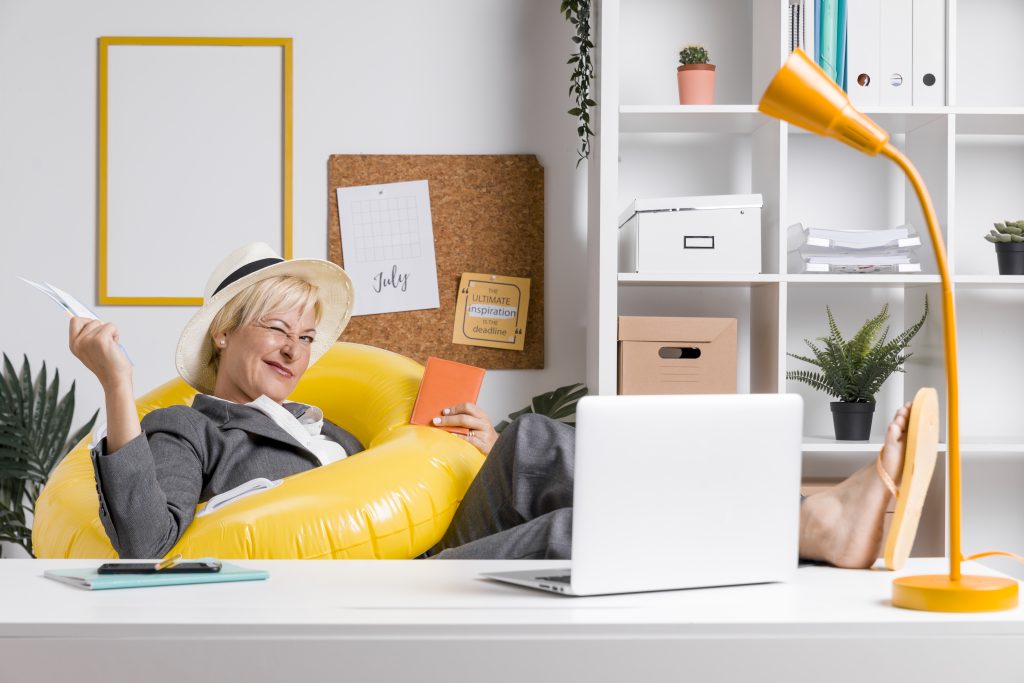How to Tidy Your Mind Like You Tidy Your Desk
Emma Brooks July 2, 2025
Just as a clean desk eases stress and enhances productivity, a decluttered mind improves focus, creativity, and well-being. In 2025, mental clutter—constant distractions, endless to-dos, perpetual multitasking—is emerging as a critical wellness challenge. Drawing from neuroscience and productivity research, here’s a practical guide on how to tidy your mind like you tidy your desk, using techniques that sync mental and physical clarity.

The Science Behind Mess and the Mind
1. Clutter Competes for Attention
Neuroscientist Sabine Kastner’s research shows visual clutter taxes our brain’s attention systems. With each extra object, our brain devotes more cognitive resources to filtering distractions, which depletes focus and increases fatigue.
2. Stress Hormones and Disorganized Spaces
A UCLA study found clutter elevates cortisol—the stress hormone—especially in living environments, which impairs health, sleep, and emotional well-being.
3. Mental Benefits of Decluttering
Psychology Today reports that a tidy space lowers distraction, boosts productivity, and sharpens cognitive processing.
Step 1: Clear Visual Distractions—Start with Your Workspace
- Remove piles, loose papers, and non-essential gadgets.
- Use cable organizers or bins—less visual chaos frees mental space.
- Keep a five-minute end-of-day desk tidy routine to reset your mental dashboard.
This isn’t just cleaning—it’s cognitive offloading. When your desk is in order, your brain isn’t repeating “I need to organize this” on loop.
Step 2: Apply “Attention Restoration” to the Mind
The Attention Restoration Theory (ART) suggests that gentle distractions—like nature or quiet reflection—help replenish depleted cognitive control.
How to use it:
- Schedule 5–10 minute mental breaks—step outside, notice surroundings, or sit calmly.
- Let your thoughts drift—no to-do list allowed.
- Return with a fresher mind better able to resist mental clutter.
Step 3: Set Cognitive Boundaries Like Physical Ones
Just as you might designate “work-only” zones, use tools to structure your mental landscape:
- Turn off notifications during focus sessions.
- Use methods like Pomodoro to alternate work and mindfulness.
- Practice journaling to write down lingering thoughts and free mental RAM.
These mental “zones” help reduce continuous partial attention, which research shows leads to stress, reduced working memory, and decreased creativity.
Step 4: Sort Thoughts the Way You Organize Files
- Keep a “parking lot” journal or digital app for off-topic ideas and worries.
- Categorize tasks or idea lists—label what’s important, later, or not at all.
- Set aside time weekly to process and purge what no longer serves.
This mirrors your desk’s filing system—prioritize and archive so only essentials remain at the forefront.
Step 5: Use Physical Decluttering Techniques for Your Mind
- KonMari your thoughts: Keep only those ideas or worries that “spark forward action.”
- Five-minute zone clears: Spend five minutes clearing mental clutter before deep work.
- Visual mind maps: Sketch key thoughts to externalize them and release mental space.
These methods help you externalize mental noise—freeing the brain to focus.
Step 6: Digitally Declutter Your Mindspace
Your desk isn’t the only clutter hotspot. Digital spaces matter too.
- Delete unused apps.
- Unsubscribe from unused email lists.
- Organize digital files with clear folder hierarchies.
A clean digital environment supports smoother thinking with fewer distractions.
The Daily Mental Decluttering Routine
- Morning reset: 2-minute brain dump—jot down pressing thoughts.
- Pre-work tidy: Clear physical and digital workspace for 5 minutes.
- Midday mental break: 5-minute ART walk or mindfulness pause.
- End-of-day processing: Review tasks, purge what’s unnecessary, prep for tomorrow.
This mirrors the physical routine of tidying your desk—only it’s for the mind.
Why This Works: The Psychology Behind Mental Organization
- Visual cue suppression: Removing clutter reduces competing stimuli .
- Lower cortisol: A tidy environment lowers stress levels physically and mentally.
- Improved working memory: Less clutter allows your brain to store and manage important information .
Together, these changes restore directed attention and strengthen cognitive performance.
Pitfalls to Watch For
- All-or-nothing approach: You don’t need a spotless desk to start—progress is more important than perfection.
- Over-tidying: Some idea clutter is healthy; letting your mind wander fuels creativity.
- Ignoring emotion: If tidying triggers stress, seek support and handle deeper issues gently.
Mental clarity isn’t about eliminating all thoughts—it’s about curating them.
Case Study: Clean Desk, Clear Mind in Real Life
A remote working survey found that professionals with more organized workspaces reported 40% less stress and 30% higher focus during virtual meetings than those in messy environments .
Meanwhile, employees who implemented a five-minute tidal routine (cleaning desk and brain dump together) reported improved morning clarity and faster task start-up times.
Conclusion
In our overloaded world, tidying the space around you—and within you—has become essential. By applying desk-tidying strategies to your mind, you can reclaim focus, reduce stress, and boost well-being.
Start small. Tidy your desk. Offload a thought. Take a pause. Over time, these actions add up.
When you tidy your mind like you tidy your desk, you’re doing more than cleaning—you’re creating mental breathing room for what matters most.
References
- Psychology Today (2023) – The Many Mental Benefits of Decluttering
Explores how clutter affects cognitive load and how a clean space enhances mental clarity and emotional stability. https://www.psychologytoday.com - Medium (2023) – The Surprising Link Between Clutter and Cortisol Levels
Discusses scientific findings connecting physical clutter with increased stress hormone (cortisol) production. https://medium.com - Psychology Today (2022) – How Nature Rests, Restores, and Regenerates Our Minds
Summarizes research on Attention Restoration Theory and how natural environments help replenish mental energy. https://www.psychologytoday.com





